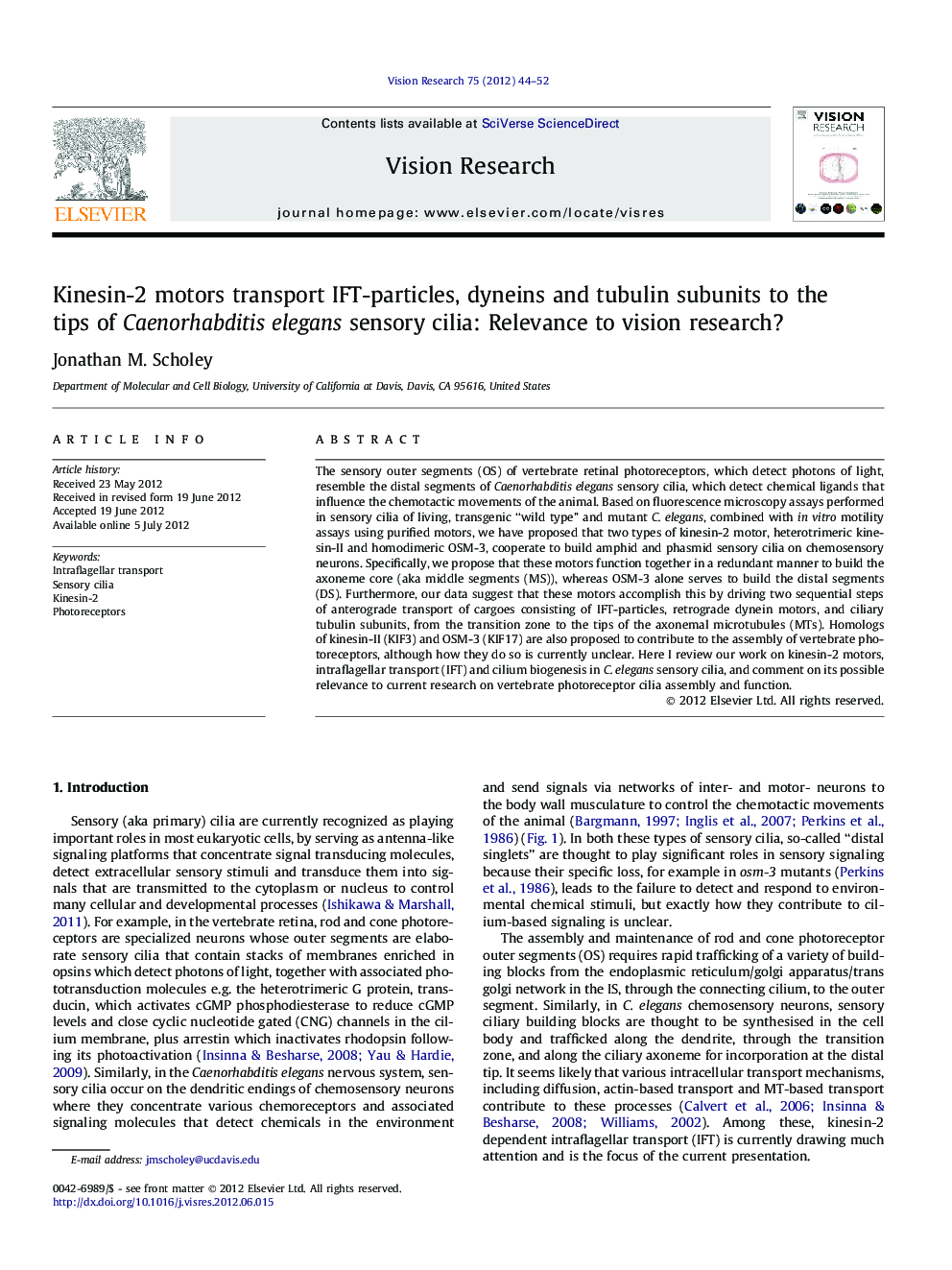| Article ID | Journal | Published Year | Pages | File Type |
|---|---|---|---|---|
| 4033869 | Vision Research | 2012 | 9 Pages |
The sensory outer segments (OS) of vertebrate retinal photoreceptors, which detect photons of light, resemble the distal segments of Caenorhabditis elegans sensory cilia, which detect chemical ligands that influence the chemotactic movements of the animal. Based on fluorescence microscopy assays performed in sensory cilia of living, transgenic “wild type” and mutant C. elegans, combined with in vitro motility assays using purified motors, we have proposed that two types of kinesin-2 motor, heterotrimeric kinesin-II and homodimeric OSM-3, cooperate to build amphid and phasmid sensory cilia on chemosensory neurons. Specifically, we propose that these motors function together in a redundant manner to build the axoneme core (aka middle segments (MS)), whereas OSM-3 alone serves to build the distal segments (DS). Furthermore, our data suggest that these motors accomplish this by driving two sequential steps of anterograde transport of cargoes consisting of IFT-particles, retrograde dynein motors, and ciliary tubulin subunits, from the transition zone to the tips of the axonemal microtubules (MTs). Homologs of kinesin-II (KIF3) and OSM-3 (KIF17) are also proposed to contribute to the assembly of vertebrate photoreceptors, although how they do so is currently unclear. Here I review our work on kinesin-2 motors, intraflagellar transport (IFT) and cilium biogenesis in C. elegans sensory cilia, and comment on its possible relevance to current research on vertebrate photoreceptor cilia assembly and function.
